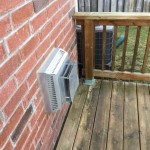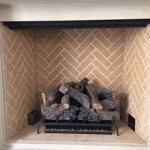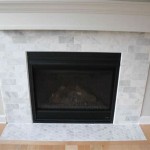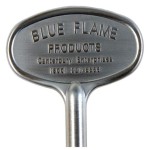Best Tile For Fireplace Surround And Hearth
Selecting the right tile for a fireplace surround and hearth is a crucial decision that impacts both the aesthetic appeal and functional safety of a home. The fireplace is often a focal point, and the chosen tile can significantly enhance its visual presence while also providing a durable and heat-resistant surface. This article explores the key considerations and tile types ideal for fireplace surrounds and hearths, providing guidance for homeowners and designers looking to make informed choices.
Key Considerations for Fireplace Tile Selection
Several factors must be considered when choosing tile for a fireplace surround and hearth. These factors encompass both the functional requirements dictated by the fireplace's heat output and the aesthetic goals for the room's overall design.
Heat Resistance: Fire-rated tiles are crucial. Certain materials are more capable of withstanding high temperatures without cracking, warping, or discoloration. The hearth, in particular, requires high heat resistance as it is directly exposed to embers and radiant heat. The ability of tile to retain and radiate heat can also affect the overall efficiency of the fireplace, influencing how effectively the fire warms the room.
Durability: The chosen tile must be durable enough to withstand daily wear and tear. This includes resistance to scratching, chipping, and staining. High-traffic areas around the hearth should be tiled with materials that can endure frequent foot traffic without showing significant signs of wear. Consider the tile's PEI (Porcelain Enamel Institute) rating, which indicates its abrasion resistance, especially for hearth applications where walking and potential dropping of objects are likely.
Maintenance: Tiles that are easy to clean and maintain are preferable, especially on the hearth where soot and ash are likely to accumulate. Porous materials might require sealing to prevent staining. The ease of cleaning will depend on the tile's surface texture and material composition. Smooth, non-porous tiles are generally easier to wipe clean than textured or natural stone options.
Aesthetic Compatibility: The tile should complement the overall style of the home and the fireplace. This involves considering the color, pattern, texture, and size of the tile in relation to the existing décor. A modern home might benefit from sleek, minimalist tile designs, while a more traditional home might favor natural stone or decorative patterns. The chosen tile should enhance the fireplace's visual presence and integrate seamlessly with the room's design elements.
Safety Standards and Building Codes: Local building codes and safety standards often dictate specific requirements for fireplace surrounds and hearths. These codes may specify the type of materials that are acceptable, as well as the required clearances around the fireplace opening. It is essential to consult with local building authorities or a qualified contractor to ensure that the chosen tile meets all applicable safety regulations. Fire-rated materials often come with documentation verifying their compliance with these safety standards.
Types of Tile Suitable for Fireplace Surrounds and Hearths
Various types of tile are suitable for fireplace surrounds and hearths, each with its unique properties and aesthetic characteristics. The choice will depend on the specific requirements of the project and the desired aesthetic outcome.
Porcelain Tile: Porcelain tile is a popular choice due to its durability, heat resistance, and wide range of available styles. It is virtually non-porous, making it resistant to staining and easy to clean, making it an excellent option for the hearth. Porcelain tile is manufactured under high pressure and fired at high temperatures, resulting in a dense, durable material. It can be glazed to achieve a variety of colors, patterns, and textures, mimicking the look of natural stone or other materials. Its low water absorption rate makes it suitable for areas exposed to moisture, although sealing the grout lines is still recommended.
Ceramic Tile: While similar to porcelain, ceramic tile is generally less dense and less durable. It may be suitable for the surround, but porcelain is often preferred for the hearth due to its superior heat resistance. Ceramic tile is made from clay that is fired at a lower temperature than porcelain, resulting in a more porous material. It is available in a wide range of colors, patterns, and sizes, making it a versatile option for fireplace surrounds. However, its higher water absorption rate means it may be more susceptible to staining and damage from freezing temperatures if used in outdoor fireplace applications.
Natural Stone Tile: Options include granite, marble, slate, and travertine. These tiles offer unique natural beauty and excellent heat resistance. Natural stone tiles offer a unique and luxurious aesthetic. Granite is particularly durable and heat resistant, making it a good choice for hearths. Marble offers a sophisticated look, but may require more maintenance due to its porous nature. Slate provides a rustic and textured appearance. Travertine has a distinctive porous surface that can be filled or left unfilled depending on the desired look. Sealing is often required to protect natural stone tiles from staining and moisture penetration.
Glass Tile: Glass tile can be used as an accent or decorative element on the fireplace surround. However, it is not typically recommended for the hearth due to its potential to crack under high heat. Glass tile is available in a wide range of colors, shapes, and sizes, and its reflective surface can add a touch of elegance and sparkle to a fireplace surround. It's essential to use tempered glass tiles specifically designed for fireplace applications to ensure they can withstand the temperature fluctuations. Glass tiles require careful installation to ensure proper adhesion and prevent cracking.
Manufactured Stone Veneer: While not technically tile, manufactured stone veneer offers a similar aesthetic and can be a cost-effective alternative to natural stone. It is lightweight and easy to install, but its heat resistance should be carefully evaluated, and it may not be suitable for the hearth. Manufactured stone veneer is made from a mixture of cement, aggregates, and pigments, molded to resemble natural stone. It is typically less expensive than natural stone and easier to install due to its lighter weight and uniform shape. However, its heat resistance can vary depending on the manufacturer and the specific product. It's crucial to choose a manufactured stone veneer that is specifically designed for fireplace applications and meets all applicable safety standards.
Installation Considerations and Best Practices
Proper installation is crucial to ensure the longevity and safety of the tiled fireplace surround and hearth. Even the highest-quality tile will fail if it is improperly installed. The following considerations should be taken into account:
Substrate Preparation: The substrate must be clean, level, and structurally sound. Any cracks or imperfections should be repaired before tiling. A cement backer board is often recommended to provide a stable and fire-resistant base. Backer boards are designed to withstand the high temperatures near a fireplace and provide a solid surface for tile adhesion. Proper preparation reduces the risk of tile cracking or becoming detached over time.
Adhesive Selection: Use a high-quality, heat-resistant thin-set mortar specifically designed for fireplace applications. The mortar should be appropriate for the type of tile being used. Some mortars are specifically formulated for use with porcelain, natural stone, or glass tiles. Using the correct mortar ensures a strong bond between the tile and the substrate and helps prevent cracking or detachment due to heat exposure.
Grout Selection and Application: Choose a grout that is resistant to staining and cracking. Epoxy grout is a good option for hearth applications due to its durability and resistance to moisture and stains. Apply the grout evenly and ensure that all joints are fully filled. Sealing the grout lines is recommended to prevent staining and make cleaning easier. Grout color should complement the tile while providing a visually appeal.
Expansion Joints: Expansion joints should be incorporated into the design to accommodate thermal expansion and contraction. These joints allow the tile to move slightly without cracking or putting stress on the surrounding structure. Expansion joints are especially important around the perimeter of the hearth and where the tile meets other materials, such as wood or drywall.
Professional Installation: While DIY installation is possible, hiring a professional tile installer is often recommended, especially for complex projects. A professional installer has the experience and expertise to ensure that the tile is properly installed and meets all applicable building codes and safety standards. They can also advise on the best materials and techniques for the specific project.
Selecting and installing the right tile for a fireplace surround and hearth requires careful consideration of various factors. By understanding the properties of different tile types, addressing installation considerations, and prioritizing safety standards, homeowners can create a beautiful and functional fireplace that enhances their home's aesthetic appeal and provides years of reliable performance. Careful planning and execution are essential for achieving a fireplace that is both visually appealing and structurally sound.

What Are The Best Tiles For A Fireplace Rotherham Centre

Fireplace Tiles Classique Floors Tile Portland Or

Fireplace Tile Ideas Designs To Inspire You

30 Best Fireplace Tiles Ideas For Your Mantel Remodel Comfy Living Room Decor Design Surrounds

58 Best Fireplace Tile Ideas To Transform Your Hearth Remodel Surround Design

Fireplace Tiles Classique Floors Tile Portland Or

Choosing The Best Tiles For Your Fireplace
/102661017-6a23c040b71843379188b96b21ac1a08.jpg?strip=all)
How To Tile A Fireplace

Fireplace Tiles The Tile Home Guide
Trend Watch Tile Fireplace Surrounds
Related Posts








